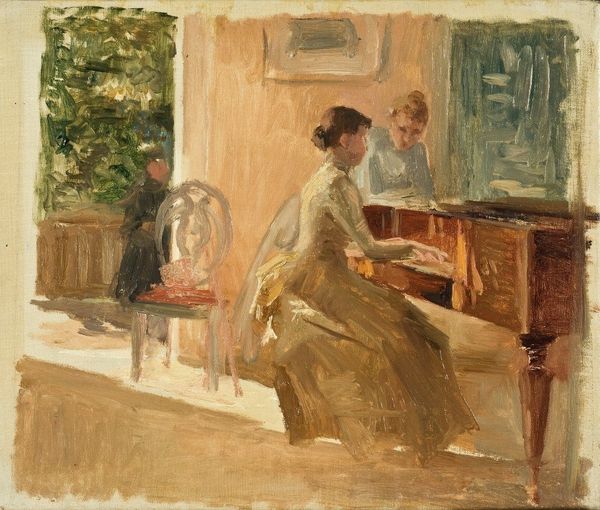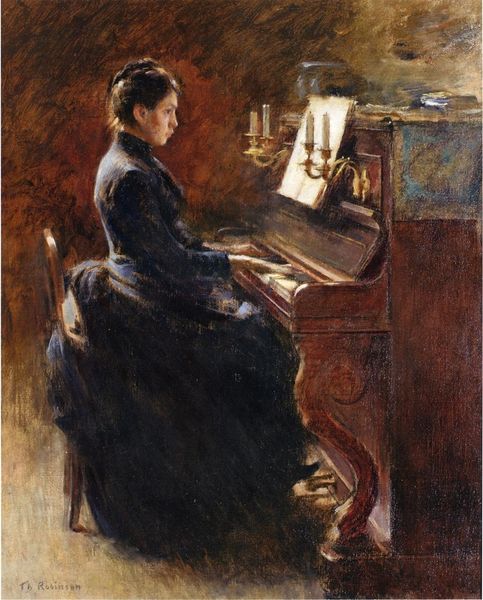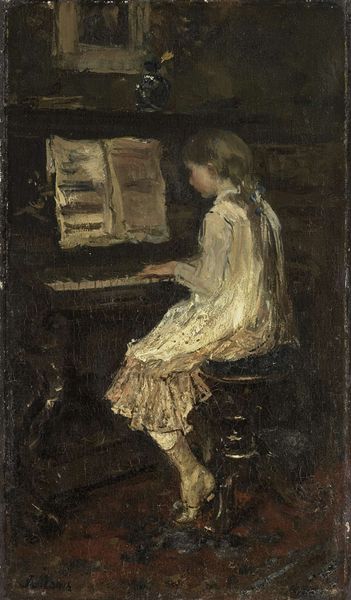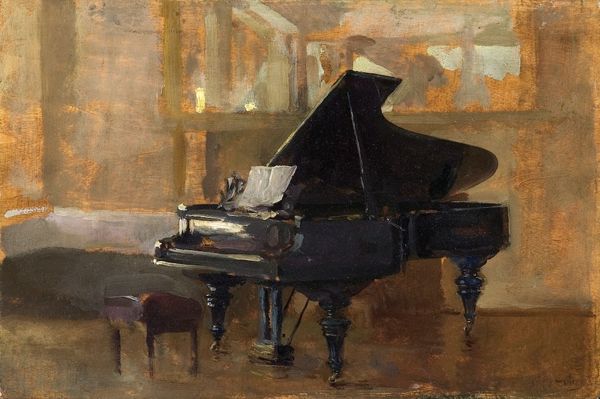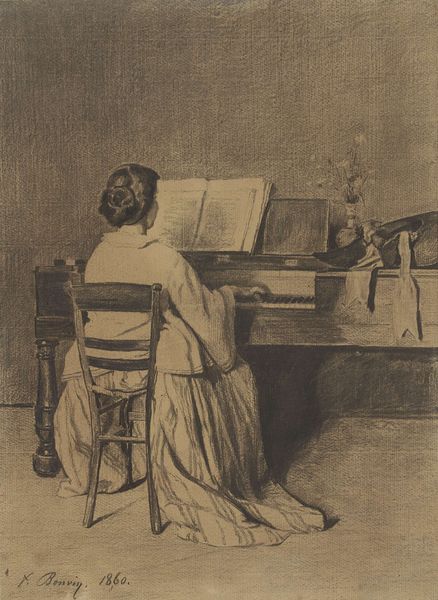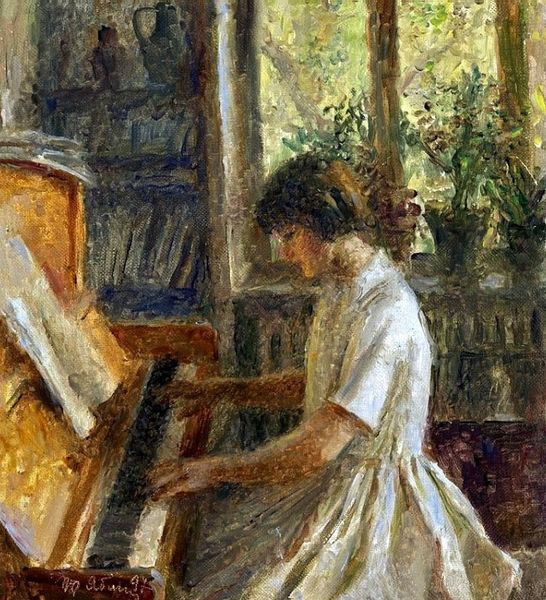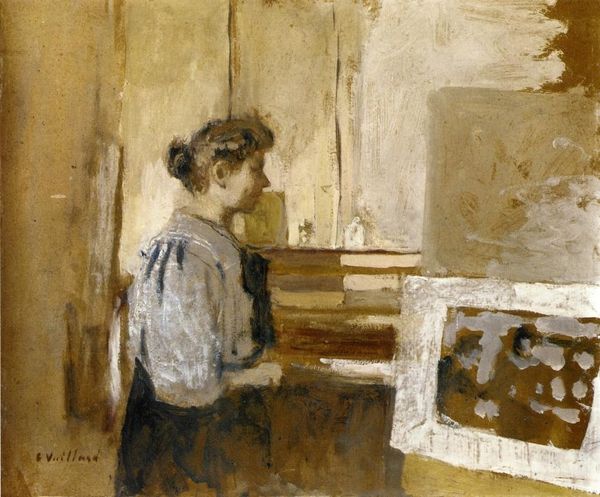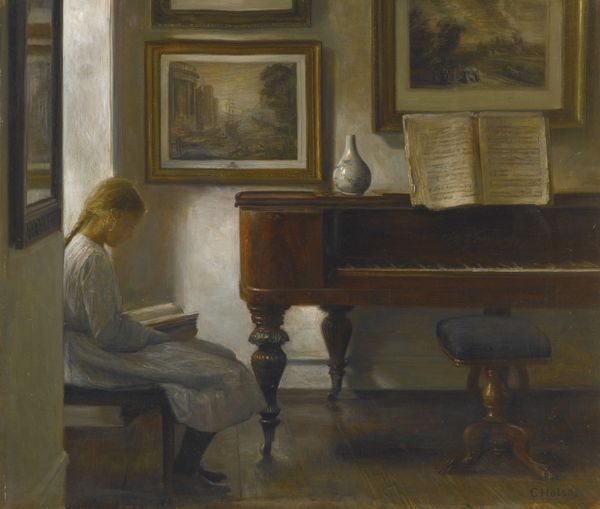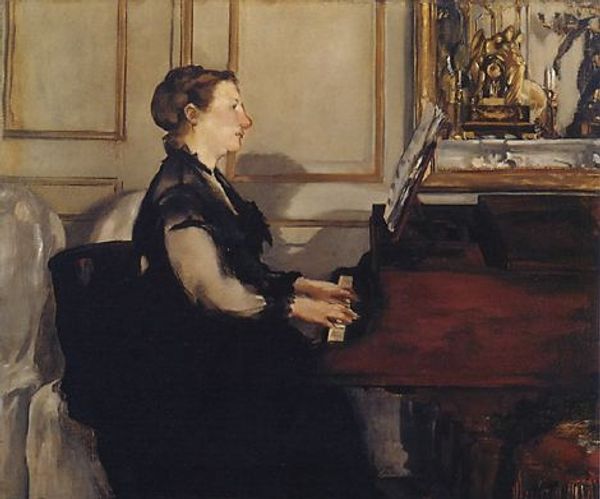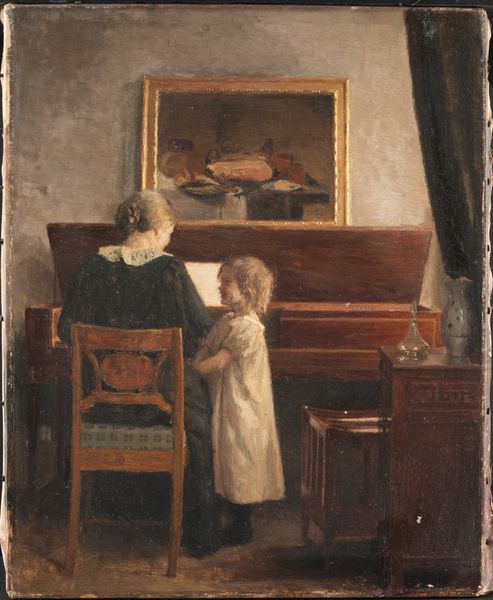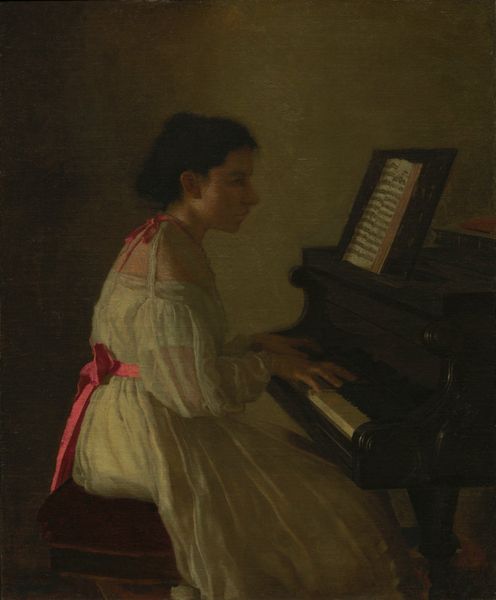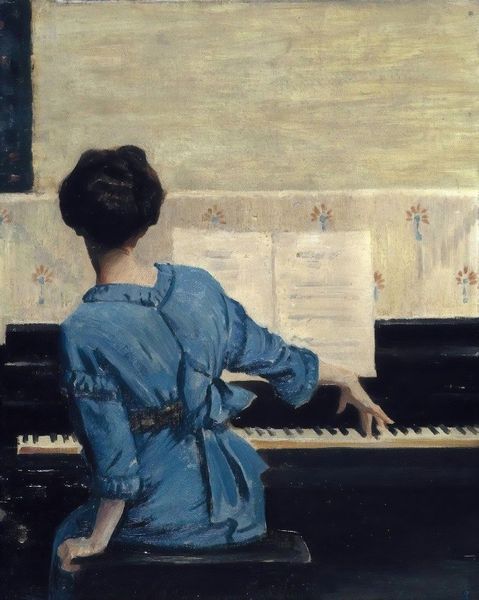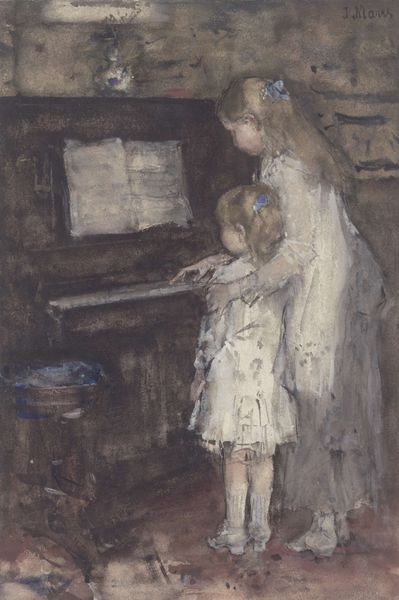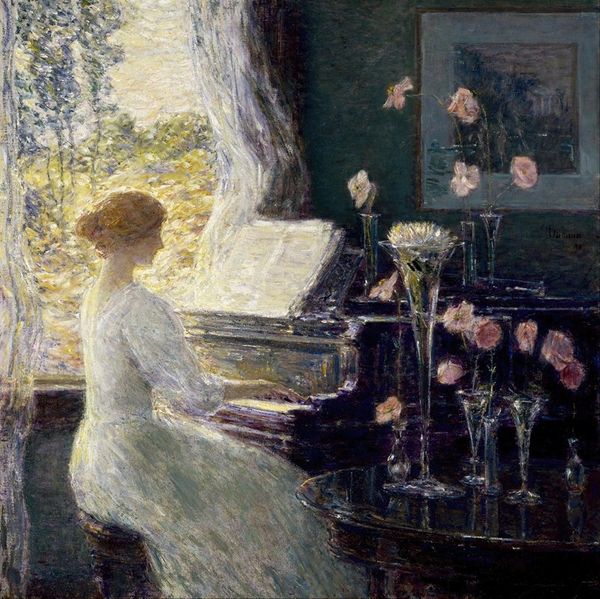
Dimensions: support: 508 x 406 mm frame: 600 x 500 x 55 mm
Copyright: CC-BY-NC-ND 4.0 DEED, Photo: Tate
Curator: Walter Sickert's "Tipperary" presents us with a quiet interior scene, focusing on a woman at a piano. Editor: My immediate impression is one of muted melancholy. The subdued palette and the woman's averted gaze create a sense of introspection. Curator: Indeed. Sickert often explored themes of isolation and alienation, particularly in relation to women within domestic spaces. Her hat and the presence of the piano perhaps speak to gendered expectations around performance and appearance. Editor: The piano itself, though, is so prominent—almost looming. Pianos often symbolize domesticity, but also creativity and social standing. I wonder if it hints at aspirations or a life unfulfilled. Curator: It’s fascinating how the symbolism of the piano intersects with the woman's own social role, raising questions about agency and self-expression within the Edwardian era. Editor: Definitely, and the way Sickert uses light and shadow to obscure her face contributes to this sense of ambiguity and quiet resistance. It gives us so much to think about.
Comments
Join the conversation
Join millions of artists and users on Artera today and experience the ultimate creative platform.
tate 8 months ago
⋮
Sickert's model 'Chicken' is playing 'It's a Long Way to Tipperary', one of the popular songs British troops sang as they marched away to the trenches in the First World War. Although born in Munich, Sickert was appalled by Germany's agression and much regretted being too old to enlist.This is one of a number of similar piano subjects made early in the war in Sickert's studio at 26 Red Lion Square. They are all briskly and informally painted, Sickert telling his friend Ethel Sands how he used 'thin free hard rubs of paint mixed with turpentine'. As with so many of his works Sickert's use of an evocative title transforms the picture, here making the viewer imagine the tune and emotion of the moment. Gallery label, April 1996
